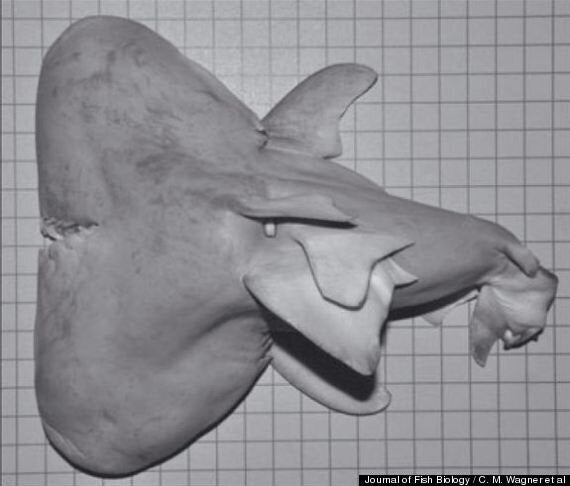A shark with two heads.
Let that sink in for a moment.
Two sets of gaping razor-sharp teeth for the price of one.
Scientists, at least, are hailing the two-headed bull shark, discovered by fishermen in the Gulf of Mexico last April, as a one-of a-kind find.
And that may be reason for a very unscientific sigh of relief.
This critter never got a chance to inspire a Stephen Spielberg move, as it was was pulled while only a fetus from the adult shark's womb.
According to LiveScience.com, the fetus lived on a few fleeting moments.
The deformity in this bull shark, also known as Carcharhinus leucas, was likely the result of an embryo beginning to split into twins, but doing so incompletely.
As a result, the shark had a pair of complete heads, hearts and stomachs. The rest of its body formed a single tail.

The two-headed bull shark fetus. It's about 8 inches (20 centimeters) from head to head.
Michigan State University professor and study co-author Michael Wagner advised against linking the find to the Deepwater Horizon oil spill that also occurred last April.
“Given the timing of the shark’s discovery with the Deepwater Horizon oil spill, I could see how some people may want to jump to conclusions," he told Time Magazine.
"Making that leap is unwarranted. We simply have no evidence to support that cause or any other.”
According to reports, roughly six two-headed sharks have been documented over the years, but this was the first multi-headed bull shark to ever be officially recorded and documented.
According to the International Shark Attack File, 2012 saw 80 unprovoked shark attacks around the world, resulting in seven deaths.
Also on HuffPost
